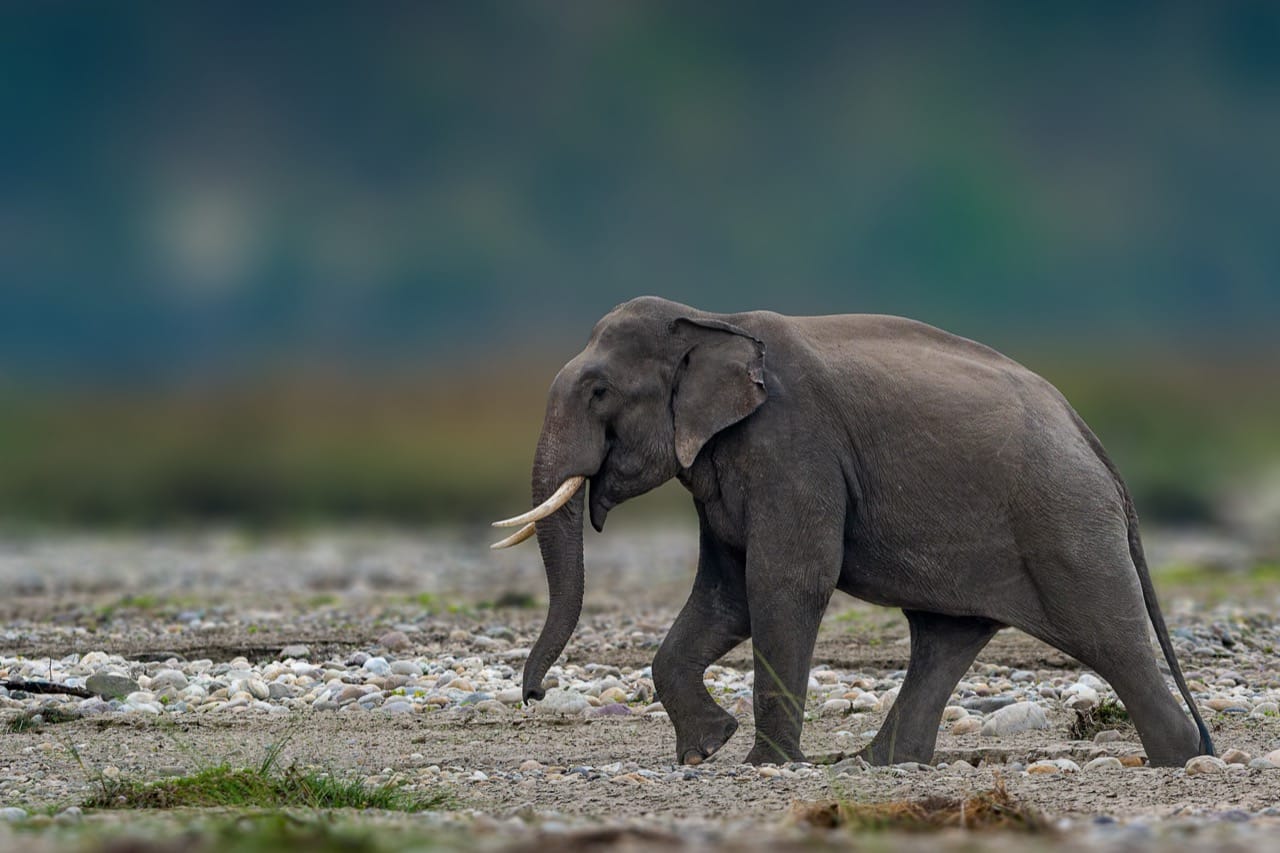Imagine encountering a creature so majestic that its mere presence commands respect and awe. The Asian Elephant, a symbol of wisdom in many cultures, is just such a being. With its grand stature and gentle eyes, it teaches us about strength, endurance, and the importance of community. In this exploration, we delve into the life of the Asian Elephant, uncovering the secrets of its survival, intricate social structures, and the challenges it faces in the modern world.
Characteristics / Physical Description
The Asian Elephant (Elephas maximus) is slightly smaller than its African cousin but no less impressive. Adults typically stand up to 2.7 meters (9 feet) tall and weigh between 2,000 to 5,000 kilograms. Unlike African elephants, Asian elephants have smaller, rounded ears and a convex or level back. Their skin is thick and gray but may appear depigmented on the forehead and ears. Only some males possess tusks, while others, known as “tushers,” have tusk-like protrusions made of the same material.
Taxonomy and Classification
Elephas maximus is classified under the family Elephantidae and is one of the two remaining genera of elephants, the other being Loxodonta, the African elephants. There are several subspecies of the Asian Elephant, including the Indian, Sumatran, and Sri Lankan elephants, differentiated primarily by their geographic location and slight morphological features.
Behavior and Social Structure
Asian elephants are profoundly social creatures with a matriarchal structure. Herds are usually composed of females and their young, while males tend to lead solitary lives or form smaller, less tight-knit groups. Communication among Asian elephants is complex, involving a range of vocalizations, body language, and even seismic signals. The matriarch plays a crucial role in leading the herd to food and water sources and in teaching the younger members the nuances of elephant life.
Habitat and Distribution
These elephants are found in a range of habitats from wet rainforests to dry savannas, though their populations are mostly scattered across South and Southeast Asia, including India, Thailand, and Borneo. Their habitats are increasingly fragmented due to human activity, which has a significant impact on their roaming patterns and lifestyle.
Diet and Feeding Habits
Asian elephants are herbivores and consume a variety of vegetation types, including grasses, leaves, shoots, barks, fruits, and roots. An adult elephant can eat up to 150 kilograms of food per day. They are known to travel considerable distances to find food and water, which often brings them into conflict with humans.
Breeding and Reproduction
The breeding season for Asian elephants varies by region, but once conception occurs, the female undergoes a gestation period of about 22 months — one of the longest in the animal kingdom. Females give birth to a single calf, although twins have been recorded. The social structure of the herd supports the mother, with other females assisting as ‘aunties’ during the birth and upbringing of the calf.
Relationship with Humans
Historically, Asian elephants have had a significant role in human culture, particularly in South and Southeast Asia. They have been used in warfare, ceremonial functions, and as draft and pack animals. Today, while many are still used in the logging industry or live in captivity, conservation efforts focus on mitigating human-elephant conflicts and protecting habitat to ensure their survival.
Evolutionary History
Asian elephants are believed to have diverged from African elephants around 7.6 million years ago, with their closest extinct relatives being the mammoths. Their evolution has been profoundly shaped by climatic and geographical changes over millennia, influencing their current distribution and behavior.
Use as Research Animals
Due to their intelligence and complex social behavior, Asian elephants are often subjects in studies related to animal cognition, memory, and social structures. Research on elephants can also offer insights into conservation strategies and their roles in ecosystems.

